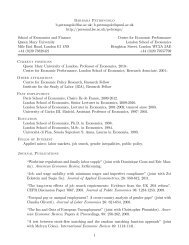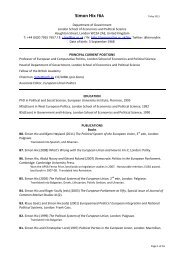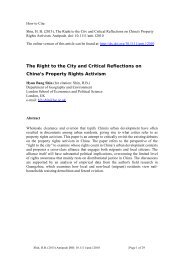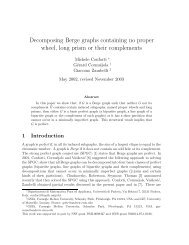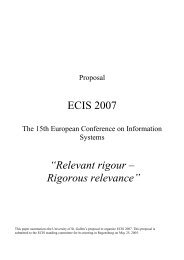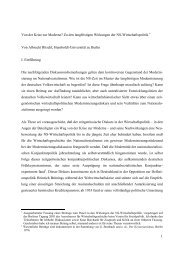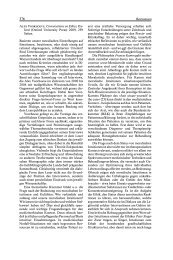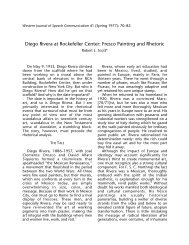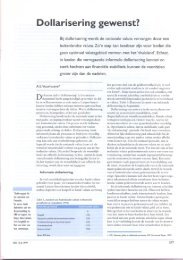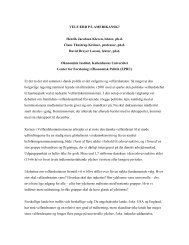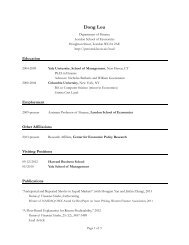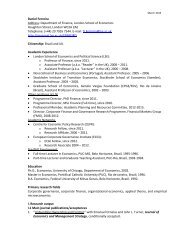Reference: MA, Debin. “The Great Silk Exchange: How the World ...
Reference: MA, Debin. “The Great Silk Exchange: How the World ...
Reference: MA, Debin. “The Great Silk Exchange: How the World ...
Create successful ePaper yourself
Turn your PDF publications into a flip-book with our unique Google optimized e-Paper software.
Roman empire (Bentley 1996: 763). Although long-distance trade became riskier and<br />
diminished as various Hunnish, Turkic and Mongol peoples divided and raided Central<br />
Asia, trade between Persia and Byzantium flourished.<br />
One of <strong>the</strong> most important developments between <strong>the</strong> 4th and 6th centuries was that<br />
<strong>the</strong> growth of a large silk trade stimulated <strong>the</strong> establishment of silk weaving industries in<br />
both Byzantium and Persia (Needham 1988: 418; Lopez 1945). The Byzantine and Persian<br />
importation of raw silk from China and Central Asia became much more important than<br />
that of <strong>the</strong> finished silk fabrics. Although <strong>the</strong> superior quality of silk material and <strong>the</strong><br />
vigorous long-distance trade led to <strong>the</strong> early widespread diffusion of silk consumption on<br />
<strong>the</strong> Eurasian continent, diffusion of <strong>the</strong> knowledge of sericulture lagged far behind largely<br />
due to <strong>the</strong> difficulty of contacts between China and <strong>the</strong> outside world. The Romans, for<br />
example, with no clue to <strong>the</strong> origin of <strong>the</strong> silk materials, expended enormous amounts of<br />
treasure on importing Chinese silk, which was claimed to be worth more than its weight in<br />
gold in Rome (Boulnois 1966: 45-6; Fang 1983: 165).<br />
The high price of silk, due to worldwide demand and high transaction costs as well<br />
as constant disruptions in trade, provided a strong incentive for regions and states to acquire<br />
<strong>the</strong> knowledge of sericulture. Slowly, <strong>the</strong> knowledge of how to make silk threads began to<br />
unravel beyond Chinese territory along <strong>the</strong> trade routes. Understandably, details regarding<br />
<strong>the</strong> timing and mechanism of <strong>the</strong> early technological diffusion of silk were largely lost in<br />
<strong>the</strong> long lapse of time, except perhaps in <strong>the</strong> form of legends. One such legend was <strong>the</strong><br />
acquisition of <strong>the</strong> Chinese secret of sericulture by a Central Asian Kingdom located in<br />
Khotan, (now Hotan) in <strong>the</strong> Western part of China, <strong>the</strong> province of XingJiang. The legend<br />
5



